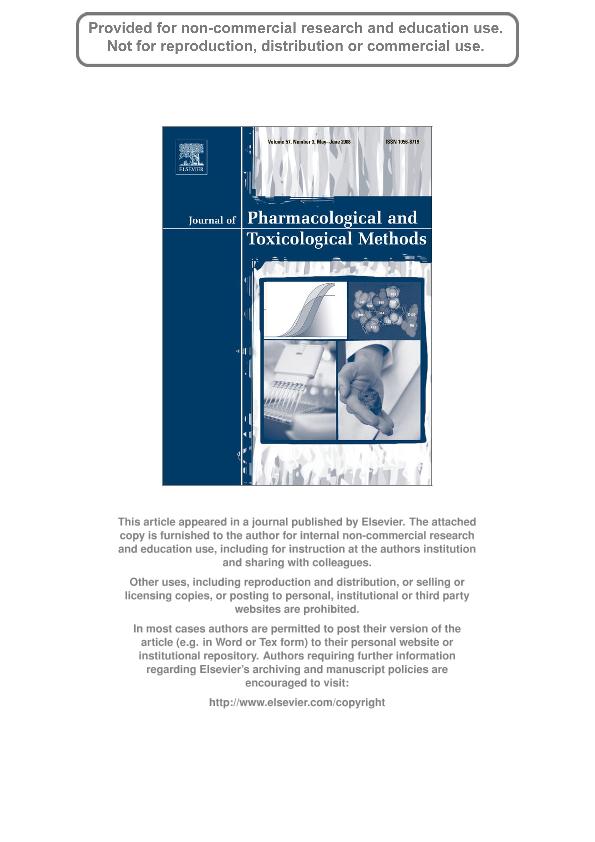Artículo
Comparison of different pharmacodynamic models for PK-PD modeling of verapamil in renovascular hypertension
Bertera, Facundo Martin; Mayer, Marcos Alejandro ; Opezzo, Javier A. W.; Taira, Carlos Alberto
; Opezzo, Javier A. W.; Taira, Carlos Alberto ; Höcht, Christian
; Höcht, Christian
 ; Opezzo, Javier A. W.; Taira, Carlos Alberto
; Opezzo, Javier A. W.; Taira, Carlos Alberto ; Höcht, Christian
; Höcht, Christian
Fecha de publicación:
05/2008
Editorial:
Elsevier
Revista:
Journal Of Pharmacological And Toxicological Methods.
ISSN:
1056-8719
Idioma:
Inglés
Tipo de recurso:
Artículo publicado
Resumen
Introduction: The aim of this work was to compare the suitability of different pharmacodynamic models for PK-PD modeling of verapamil cardiovascular effects in aortic coarctated rats (ACo), a model of renovascular hypertension. Methods: A "shunt" microdialysis probe was inserted in a carotid artery of anaesthetized sham-operated (SO) and ACo rats for determination of verapamil plasma concentrations and their effects on blood pressure and heart rate after intravenous application (1 and 3 mg kg- 1). Correlation between verapamil plasma levels and their cardiovascular effects was established by fitting data to a linear, and a conventional and modified Emax model. Results: No differences in verapamil volume of distribution were observed between experimental groups. Whilst clearance increased with dose in SO rats, no differences were found in verapamil clearance in ACo comparing both dose levels. A good correlation between verapamil plasma unbound concentrations and their hypotensive and chronotropic effects was found in both experimental groups using the tested PK-PD models. Although all pharmacodynamic models allowed a precise estimation of verapamil PK-PD parameters, linear and Emax model did not permit an accurate PK-PD parameter estimation for the hypotensive and chronotropic effect, respectively. Conversely, the modified Emax model allows both a precise and accurate estimation of PK-PD parameters for verapamil effects. Although, absolute verapamil blood pressure lowering effect was greater in ACo rats compared with SO rats, no differences were found in verapamil PK-PD parameters estimated for the hypotensive response. Discussion: Side-by-side comparison of the tested pharmacodynamic models showed that accuracy of PK-PD parameters estimation by using the linear and classical Emax model depends on the magnitude of concentration-effect curve covered in the study. Conversely, the modified Emax model allowed both a precise and accurate estimation of PK-PD parameters, suggesting that the modified Emax pharmacodynamic model is the most suitable for verapamil PK-PD modeling.
Archivos asociados
Licencia
Identificadores
Colecciones
Articulos(OCA HOUSSAY)
Articulos de OFICINA DE COORDINACION ADMINISTRATIVA HOUSSAY
Articulos de OFICINA DE COORDINACION ADMINISTRATIVA HOUSSAY
Citación
Bertera, Facundo Martin; Mayer, Marcos Alejandro; Opezzo, Javier A. W.; Taira, Carlos Alberto; Höcht, Christian; Comparison of different pharmacodynamic models for PK-PD modeling of verapamil in renovascular hypertension; Elsevier; Journal Of Pharmacological And Toxicological Methods.; 57; 3; 5-2008; 212-219
Compartir
Altmétricas



